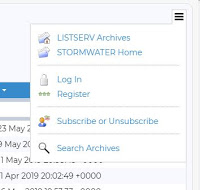Reducing stormwater pollution helps prevent toxins from entering the water and harming orca and salmon
The state’s most-populated cities and counties now have updated municipal stormwater permits. The permits are aimed at reducing stormwater pollution at its source, treating it, and controlling volume and flow, so cleaner water goes into creeks, rivers, lakes, groundwater, and Puget Sound.
Why it matters
A clean street and a clear catch basin or stormwater drain are key to clean stormwater! Photo credit: City of Federal Way, D.Smith
“More than 160 cities, counties, and municipalities are part of the stormwater permits.” said Heather Bartlett, Water Quality Program Manager at Ecology. “By managing stormwater, they are reducing the flow of toxins into Washington’s waters. Reducing exposure to toxic pollutants is one of our top priorities for protecting and restoring orca and salmon.”
Washington’s municipal stormwater permitting program is unique in the amount of state funding devoted to implementation. Ecology provides financial support to permittees through a multi-million dollar grant program used to address the impacts of municipal stormwater. That said, nearly all permittees fund their core programs with stormwater utility fees.
Municipal stormwater permits are divided into three categories, based on population and geography:
- Phase I permits include incorporated cities with a population over 100,000 people and unincorporated counties with populations over 250,000 people.
- Western Washington Phase II and Eastern Washington Phase II permits are for the next most populated parts of the state.
We separate the Phase II permits into East and West because of the differences in climate.
Our map shows the areas of the state with municipal stormwater permits.
What are the updates?
We review and update the permits to add new science and clarify requirements. Here are a few highlights from the 2019 updates:
Swales, or rain garden, helps filter pollution before it goes down the storm drain.
- Stormwater planning will help ensure low impact development remains the preferred and commonly used approach, and through a refined planning approach, identify stormwater improvement projects and activities to implement in priority basins.
- Source control programs for existing development will help ensure businesses use source control best management practices to prevent stormwater contamination and illicit discharges. Phase I Permittees have been implementing this program since the 2007 permit, and it has proven to be very effective for controlling pollution sources.
Environmental Justice: As the permits inform city and county-wide programs, we are including requirements and guidance calling attention to overburdened communities in the permits. We aim to improve awareness and be more inclusive to improve quality of life for those most affected by water quality impairments. Bilingual educaiton and outreach programs can be part of the muncipal stormwater permit
To support permit implementation, we have developed Stormwater Management Manuals for Eastern and Western Washington. The manuals are available on our municipal stormwater permits.
Three new permittees
We are adding three new permittees for 2019. We evaluated municipalities that meet the population threshold for permit coverage. Based on that evaluation, College Place in Walla Walla County, Clallam County’s Urban Growth Area surrounding Port Angeles, and Shelton in Mason County are now required to apply for the permit.
Listening to stakeholders throughout the process New permittees have an alternative implementation schedule for permit requirements, as we recognize the new permittees need time to fully develop their stormwater programs.
Renton's grant-funded Sunset Terrace Regional
Stormwater Facility bioretention cell provides
enhanced treatment for 2.9 acres.
We’ve gotten feedback from many stakeholders throughout this update process. We held listening sessions and public meetings across the state over the past two years to gather input. Our formal comment period ran from Aug. 15 through Nov. 14, 2018, resulting in more than 3,000 comments on the drafts. Our team revised permit language based on the feedback we received. You can learn more about our public process in our permit reissuance webpage.
Next steps
This is what you'll see if you click the three dashes on the listserv page.
Over the coming months, we will be updating and preparing guidance documents on implementing new permit requirements involving stormwater planning and source control permit sections.
Join our municipal stormwater permit listserv to receive future updates about our permits. Click the three dashes in the right hand corner for subscriber options.
To learn more about water quality grants and loans, including funding for stormwater projects, visit our grants and loans page.






